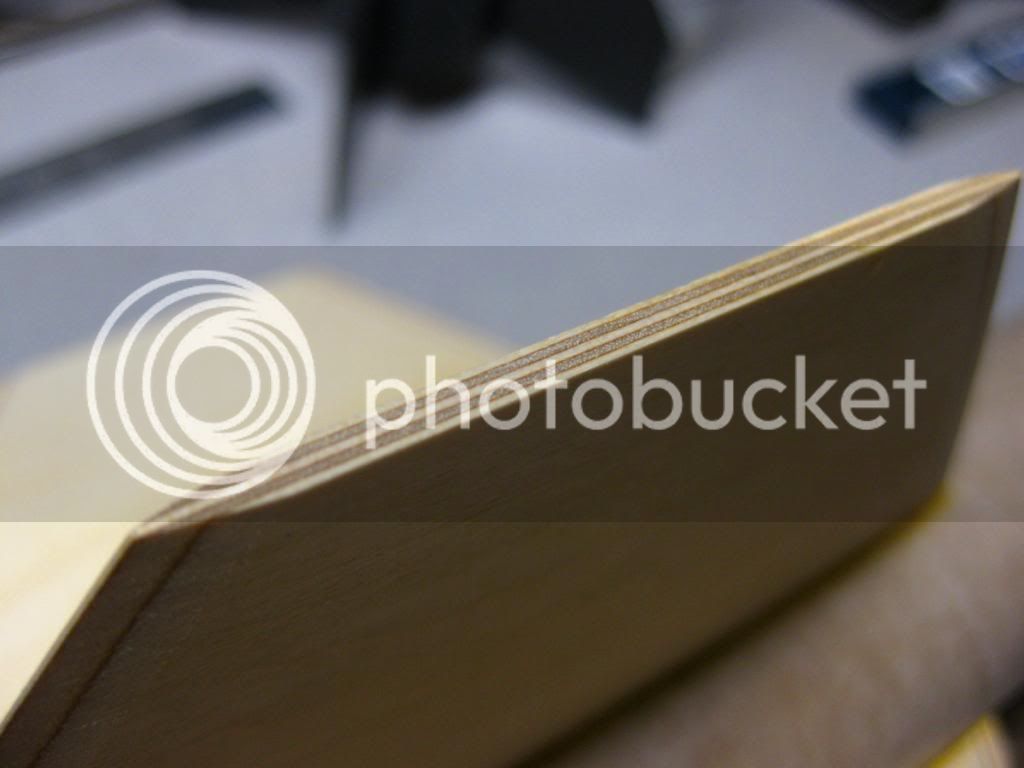I am at the fin stage of my Madcow Tembo, a 4" diameter airframe 35.5" long, a nice stubby rocket, with relatively short aspect ratio 1/4 ply fins. I am building this as a single deploy hopefully for my level 1 certification. I would like to try to aerofoil the fins, nothing radical as this rocket is not likely to see a huge benefit however I like to use each build as a exercise to learn more techniques.
The research I have done on this subject is minimal but as usual eye opening and just reminds me of how little I know on the subject of rocket science. What I have been able to determine is the final design will practically place strength over performance gain however I still want to pursue this. After reading an article off Apogee's site (News letter 305) I have interpreted that the best suited design for subsonic rockets is, as described right from the article "fins leading edge is rounded. The trailing edge is sharp. There is a fin maximum thickness that occurs at a fixed percentage of the fin cord (maximum length from the leading to the trailing edge) length back from the leading edge...basically like a symmetrical plane wing fatter up front and more narrow on the trailing edge...potentially maximum fin thickness at 25% of the fin foot length.
So obviously I need to settle on design before technique! Based on this what advice do you have on the subject of design? Then what techniques have you used to consistently get the desired shape for your proposed design?
The research I have done on this subject is minimal but as usual eye opening and just reminds me of how little I know on the subject of rocket science. What I have been able to determine is the final design will practically place strength over performance gain however I still want to pursue this. After reading an article off Apogee's site (News letter 305) I have interpreted that the best suited design for subsonic rockets is, as described right from the article "fins leading edge is rounded. The trailing edge is sharp. There is a fin maximum thickness that occurs at a fixed percentage of the fin cord (maximum length from the leading to the trailing edge) length back from the leading edge...basically like a symmetrical plane wing fatter up front and more narrow on the trailing edge...potentially maximum fin thickness at 25% of the fin foot length.
So obviously I need to settle on design before technique! Based on this what advice do you have on the subject of design? Then what techniques have you used to consistently get the desired shape for your proposed design?




